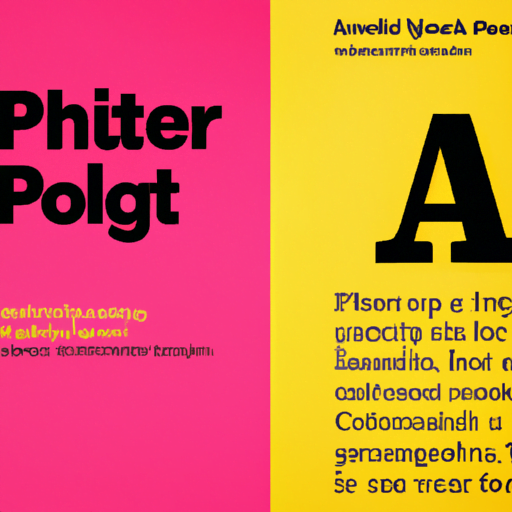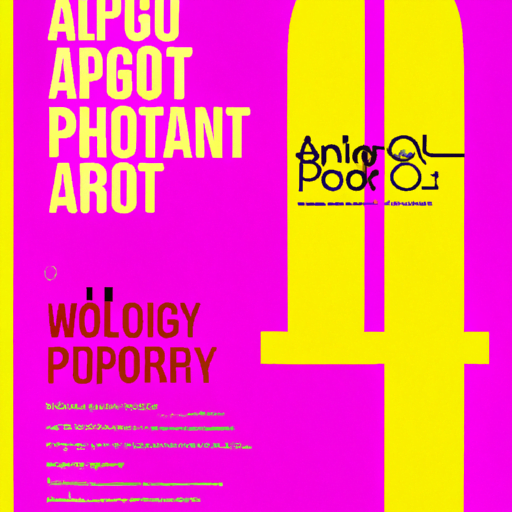
-
Table of Contents
Typography in Magazine Design: Tips for Layout and Readability

Typography plays a crucial role in magazine design, as it directly impacts the readability and overall aesthetic appeal of the publication. The right choice of fonts, sizes, spacing, and layout can make or break the reading experience for the audience. In this article, we will explore some essential tips for using typography effectively in magazine design, backed by research, case studies, and industry best practices.
The Importance of Typography in Magazine Design
Typography is not just about selecting pretty fonts; it is about creating a visual hierarchy that guides readers through the content and enhances their understanding. Here are a few reasons why typography is crucial in magazine design:
- Readability: Well-designed typography ensures that the text is easy to read, reducing eye strain and improving comprehension.
- Visual Appeal: Typography sets the tone and mood of the magazine, creating a visually pleasing experience for the readers.
- Brand Identity: Consistent typography helps establish and reinforce the magazine’s brand identity, making it easily recognizable.
- Information Hierarchy: Typography helps organize content by creating a visual hierarchy, highlighting important information and guiding readers through the magazine.
Choosing the Right Fonts
The choice of fonts is a critical aspect of typography in magazine design. Here are some tips to help you select the right fonts:
- Consider the Magazine’s Audience: Understand your target audience and choose fonts that resonate with them. For example, a fashion magazine may opt for elegant and stylish fonts, while a tech magazine may prefer modern and clean typefaces.
- Pair Fonts Strategically: Combine fonts that complement each other to create visual interest and contrast. Use a combination of serif and sans-serif fonts to differentiate headings and body text.
- Avoid Using Too Many Fonts: Stick to a limited number of fonts to maintain consistency and prevent visual clutter. Using too many fonts can confuse readers and dilute the magazine’s visual identity.
- Consider Legibility: Ensure that the chosen fonts are legible at different sizes and in various formats, such as print and digital. Test the fonts in different contexts to ensure readability.
Font Sizes and Spacing
The size and spacing of fonts significantly impact the readability and overall design of a magazine. Here are some guidelines to follow:
- Body Text Size: The body text should be large enough to read comfortably but not too large to overwhelm the page. A font size between 9 and 12 points is generally recommended for body text in print magazines.
- Heading Sizes: Use larger font sizes for headings to create a visual hierarchy and guide readers through the content. Experiment with different sizes to find the right balance between impact and readability.
- Line Spacing: Adequate line spacing improves readability by preventing the text from appearing cramped. Aim for a line spacing of 120-150% of the font size for optimal legibility.
- Letter Spacing: Adjusting the spacing between letters can enhance readability and improve the overall aesthetic appeal. Avoid excessive letter spacing, as it can make the text difficult to read.
Layout and Alignment
The layout and alignment of text elements in a magazine are crucial for creating a visually pleasing and organized design. Here are some tips to consider:
- Grid-based Layout: Use a grid system to create a consistent and structured layout. Grids help maintain alignment and balance throughout the magazine.
- Whitespace: Incorporate ample whitespace around text elements to improve readability and create a sense of visual breathing space. Whitespace also helps highlight important content.
- Alignment: Align text elements consistently to create a clean and professional look. Choose between left, right, center, or justified alignment based on the magazine’s style and content.
- Hierarchy: Use typography to establish a clear hierarchy of information. Differentiate headings, subheadings, and body text through font sizes, weights, and styles.
Case Studies and Examples
Let’s take a look at some real-world examples of magazines that have effectively used typography in their design:
1. Vogue
Vogue, a renowned fashion magazine, uses a combination of elegant serif fonts for headings and clean sans-serif fonts for body text. The large and bold headings create a strong visual impact, while the spacious layout and generous whitespace enhance readability.
2. Wired
Wired, a technology and science magazine, employs modern and futuristic typefaces to reflect its subject matter. The use of bold and condensed fonts for headings creates a sense of energy and excitement, while the clean and legible body text ensures easy reading.
3. National Geographic
National Geographic, a magazine known for its stunning photography and informative articles, uses a classic and timeless serif font for its headings and body text. The typography blends seamlessly with the magazine’s visual style, creating a cohesive and immersive reading experience.
Conclusion
Typography is a powerful tool in magazine design, influencing the readability, visual appeal, and overall user experience. By carefully selecting fonts, sizes, spacing, and layout, designers can create a magazine that engages and captivates readers. Remember to consider the target audience, maintain consistency, and prioritize readability when making typographic choices. By following these tips and studying successful examples, you can create a magazine that not only informs but also delights its readers.
